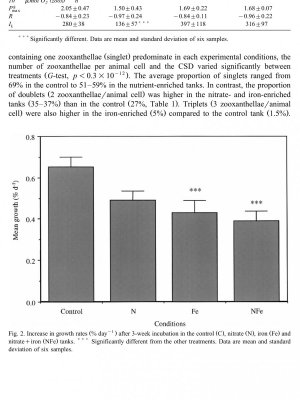Considering all these points, I am beginning to wonder if our use of the term ULNS in aquaria is a bit of a misnomer especially if we are feeding our corals. Perhaps ULNS in practice really only means low levels of inorganic N and P (as nitrate and phosphate) in the saltwater as measured by hobbyist test kits but the "System" could have medium to high nutrient levels from organic sources. Perhaps that is exactly what we see in the ocean where corals thrive in saltwater that measures low inorganic nutrient levels but high in organisms.
This is what I've always considered to be the definition of ULNS. I've not found that ULNS thrive without the addition of organic food sources.
And if we assume corals "prefer" uptake of N and P from foods (organic sources) over inorganic sources then the inorganic N and P levels in the aquarium could be more of a factor in controlling undesirable growth of algae and bacteria than feeding corals? Or perhaps we simply cannot simulate natural coral reef levels of organic matter in an aquarium so inorganic N and P in the water do play a big factor?
That's what I was trying to get at in post #29 above. I think we're all slowly getting to this answer.




















